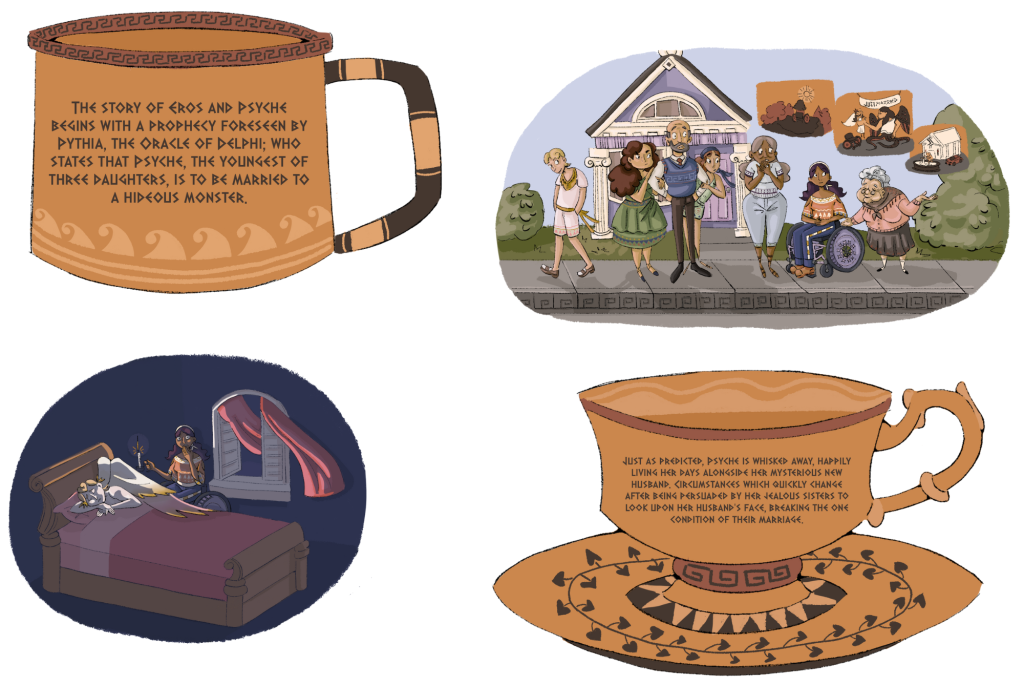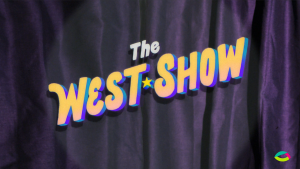Characterizing Story: Exploring the Visual Importance of Character Within the Tale of Eros and Psyche
Characterizing Story: Exploring the Visual Importance of Character Within the Tale of Eros and Psyche is a project which investigates character design and its relationship to myth. Harmoniously merging together ancient Greek motives alongside contemporary imagery to produce distinctly recognizable characters whose personalities speak for themselves no matter the time frame. The images shown below reveal snippets of this process and the journey that was underwent to achieve the final iteration of these figures. In addition to a brief visual retailing, comprised of key moments featured within this tale. Scenery accompanied by “vases” used to assist in relaying these narrative components in a written context.
Early Character Exploration
The story of Eros and Psyche is one that has been told time and time again and within various different contexts, none of which are more correct than the other. In this regard, the general narrative of the story can be understood like this:
Eros, the God of love becomes romantically entangled with a mortal known as Psyche, a women said to be even more beautiful than Aphrodite herself. A relationship which quickly turns into turmoil after Eros’s true identity is revealed, resulting in Psyche having to undertake several tasks set out by Aphrodite to win Eros’s trust back. Circumstances she is successfully able to accomplish, resulting in Psyche being transformed into the Goddess of Soul.
Given the narrative of this tale it is natural to assume that the development of these characters undertook various imaginings before landing upon their final forms. Experimentations that sought to consider the diverse ways that these characters could be perceived within a contemporary retelling that matched aspects of their personalities. Often fusing representations inspired by ancient Greek themes with a modern day aesthetic, most notably when appropriate characters were assigned human and Godly forms.
A process which can clearly be perceived below for characters such as Eros, Psyche and Aphrodite.
Eros
Eros, sometimes referred to by his Roman name Cupid, is a figure within Greek myth who is known for his matchmaking shenanigans, often bringing together or tearing mortals apart with the prick of his arrows of love and hate. Characteristically, Eros can be described as charming, attractive, and in many ways a bit of a trickster. He, alongside his mother Aphrodite, are typically associated with colors including red, gold, white, and purple. Alongside symbols such as roses, hares, and of course hearts. Features which manifest in different forms throughout these earlier iterations of the character, some more subtle than others. In addition to outside influences, including attire which draws upon the appearance of Grecian armor so as to allude to his ties to Ares, the God of War. A deliberate design choice that was also paired with his double set wings, a reference to cherubs otherwise known as cherubim’s, biblical angels which tend to mistakenly be associated with this figure. Meanwhile his human form had appearances which often took on a more wealthy and beachy coastal appearances. Alongside those which might be perceived as more casual or relaxed.
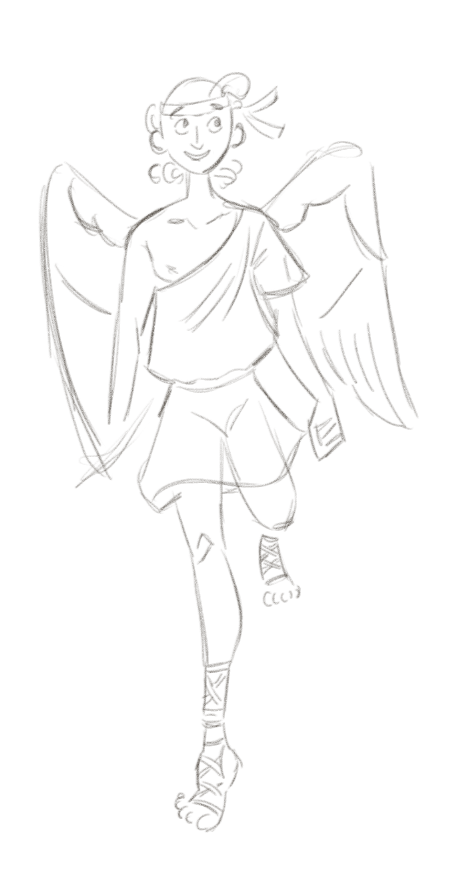
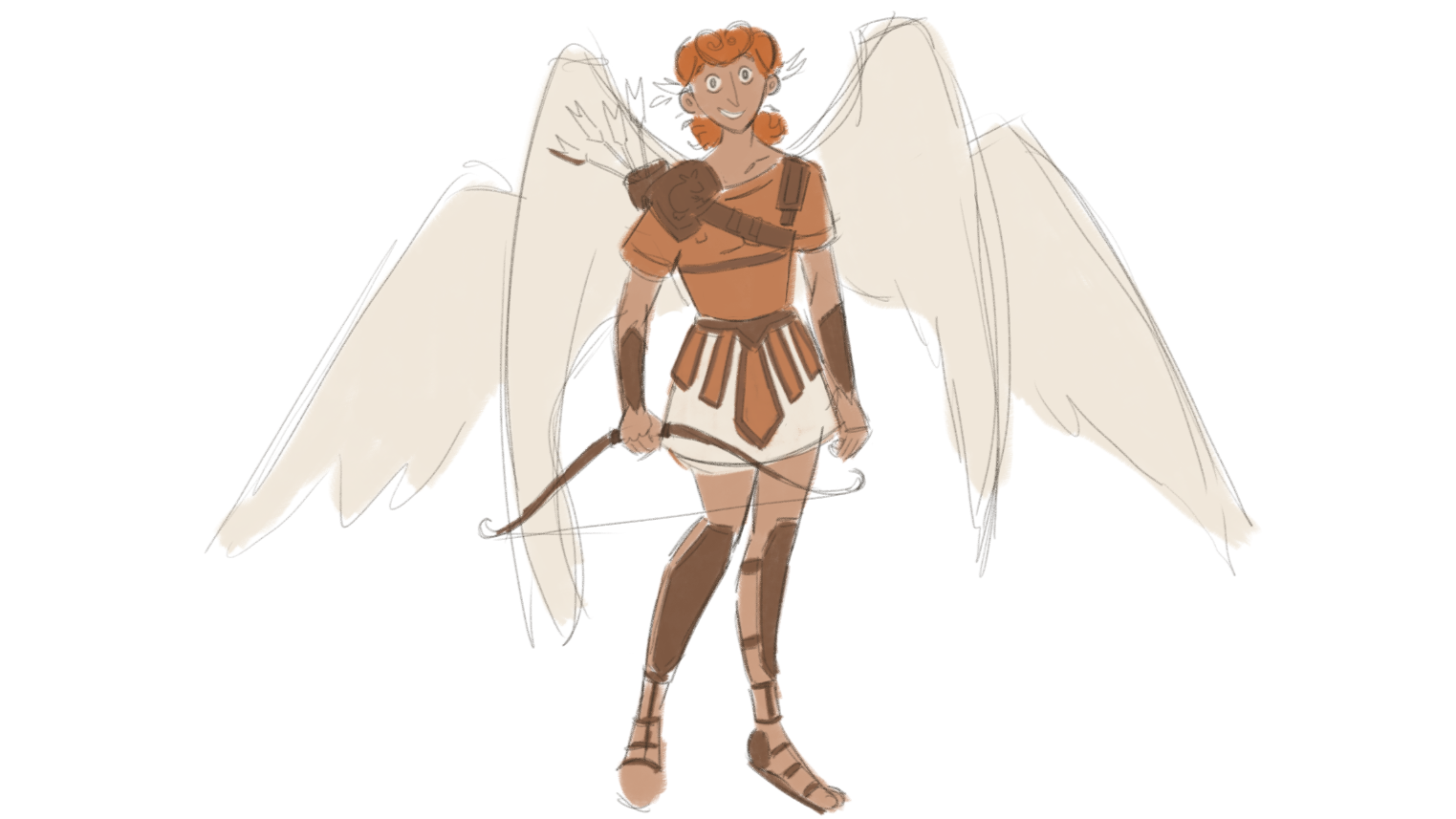
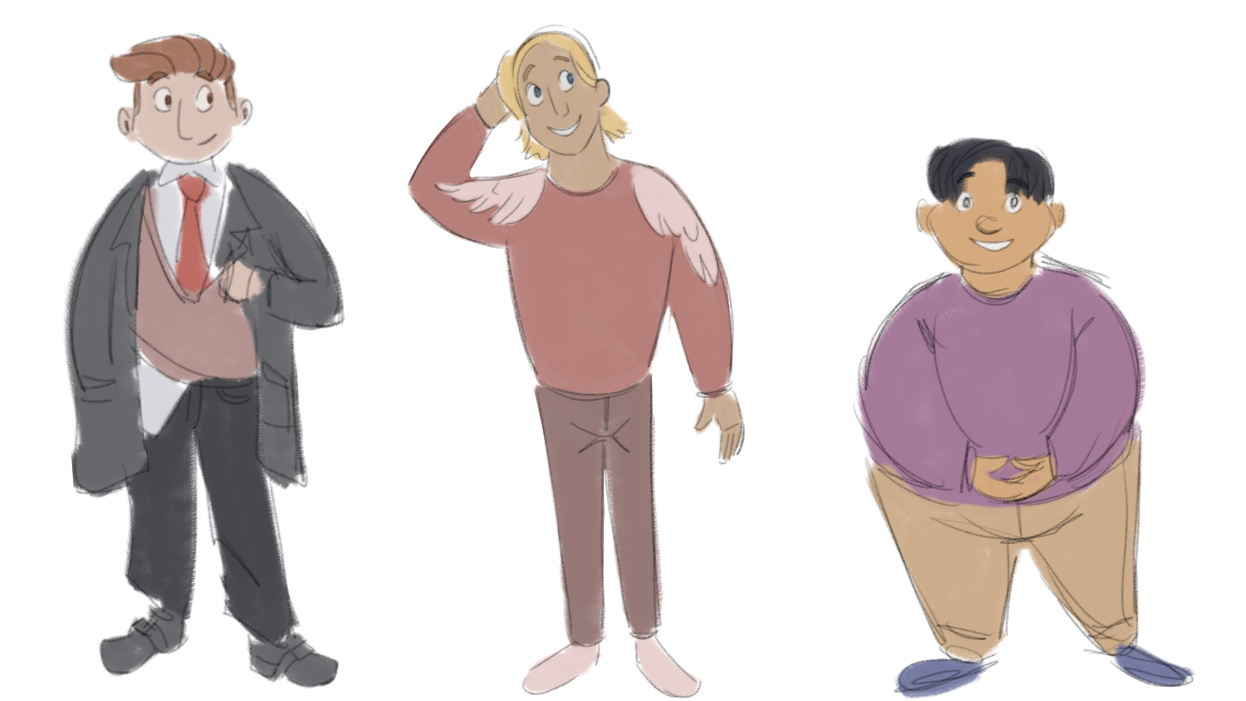
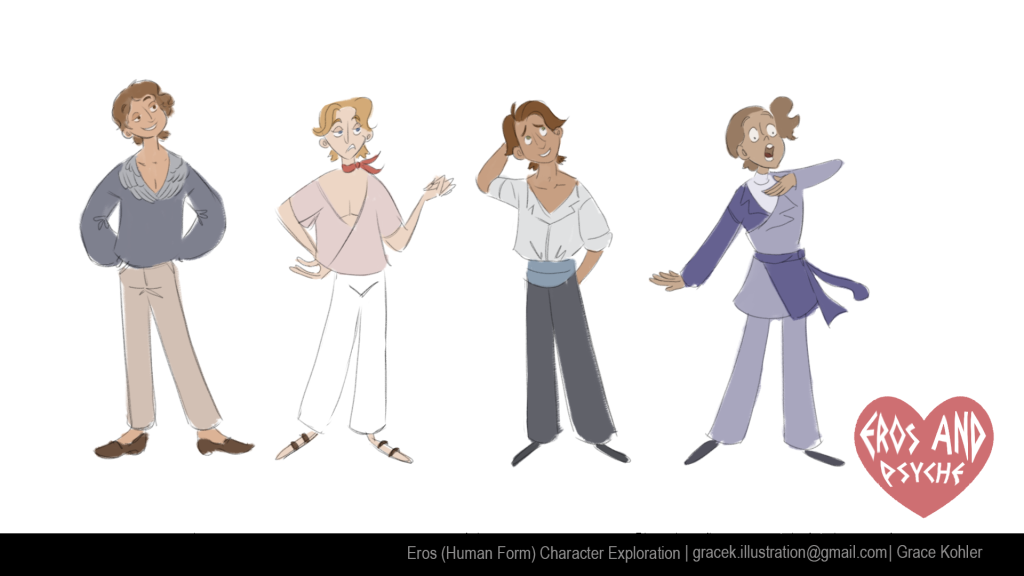
Psyche
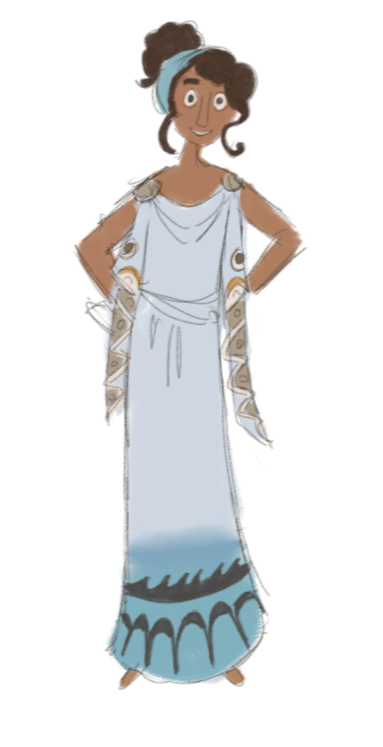
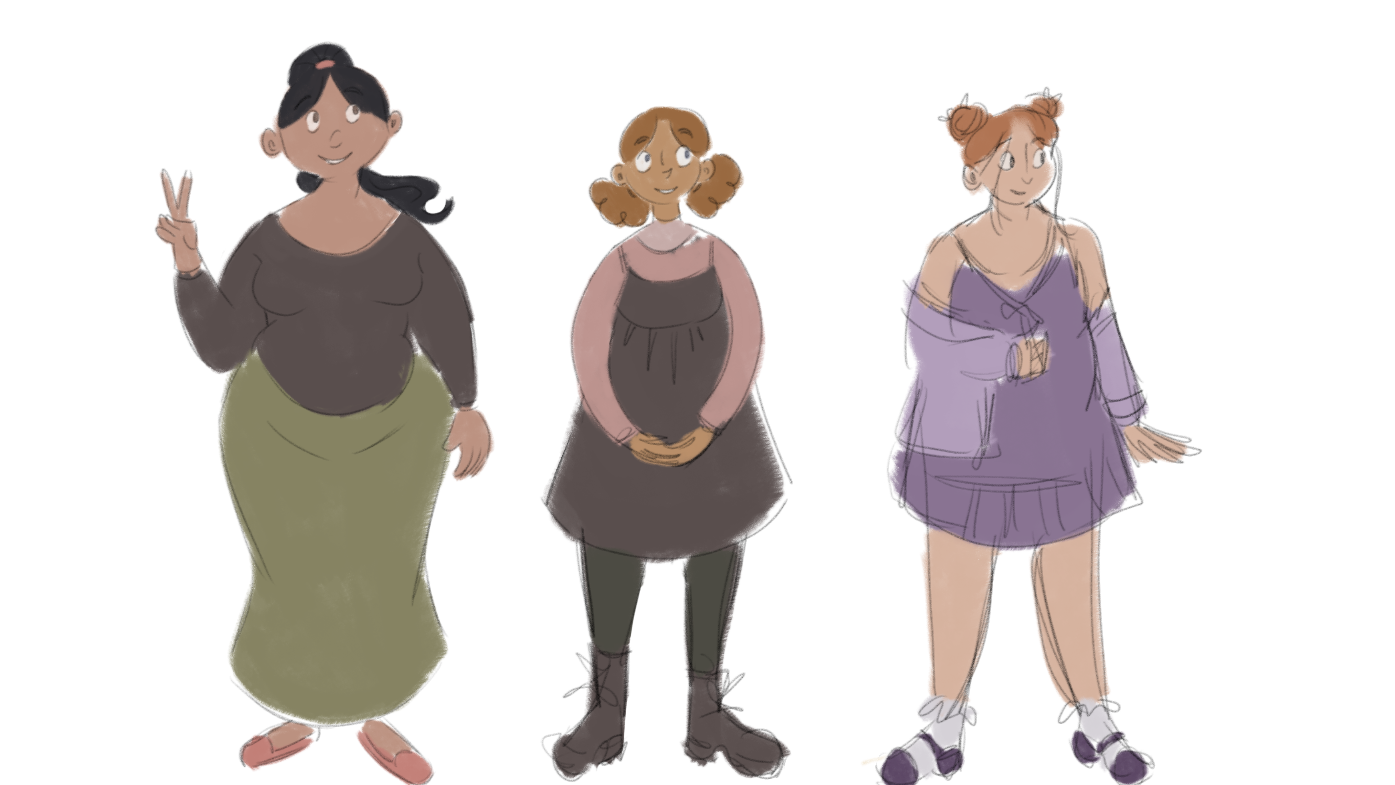
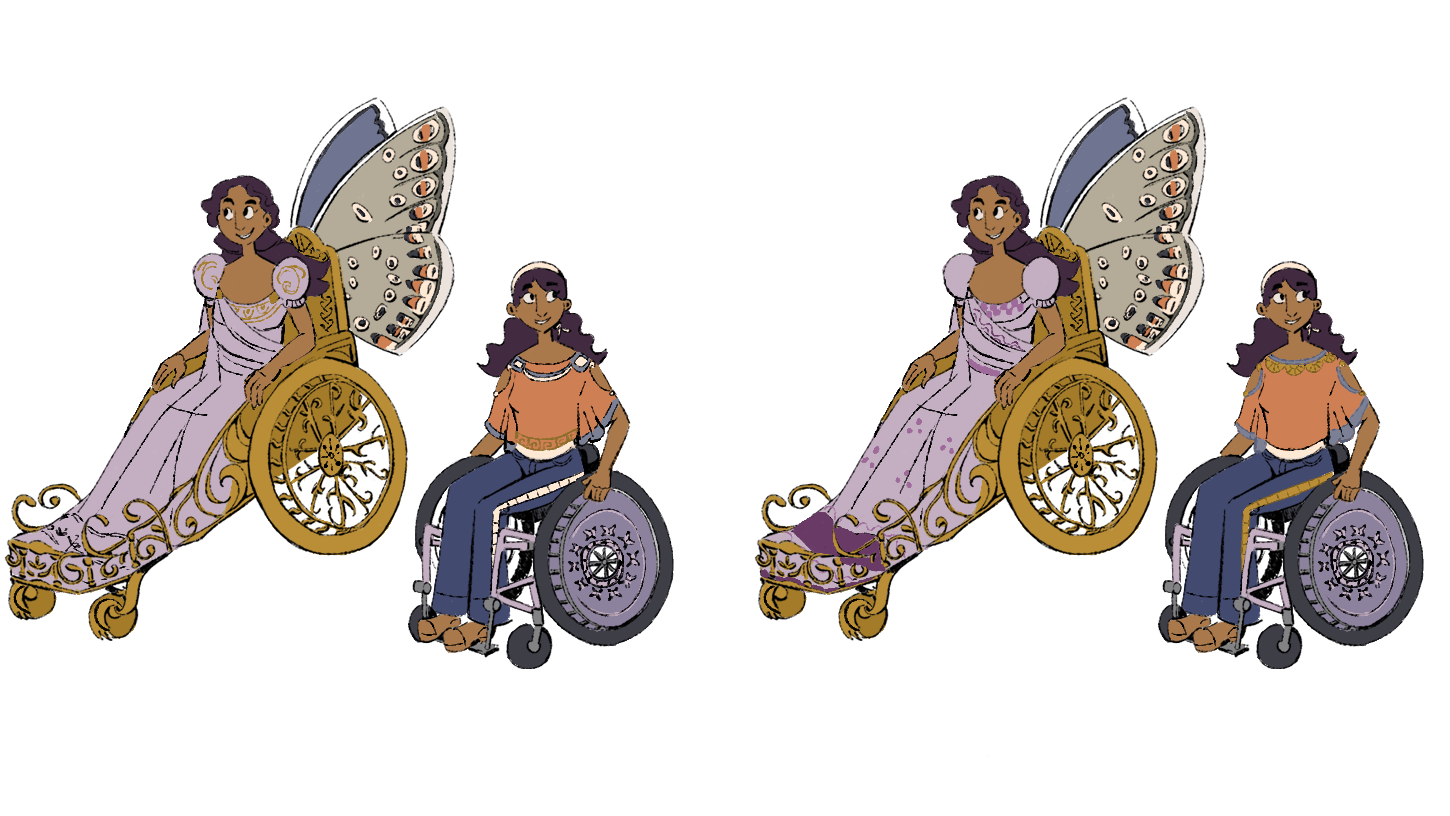
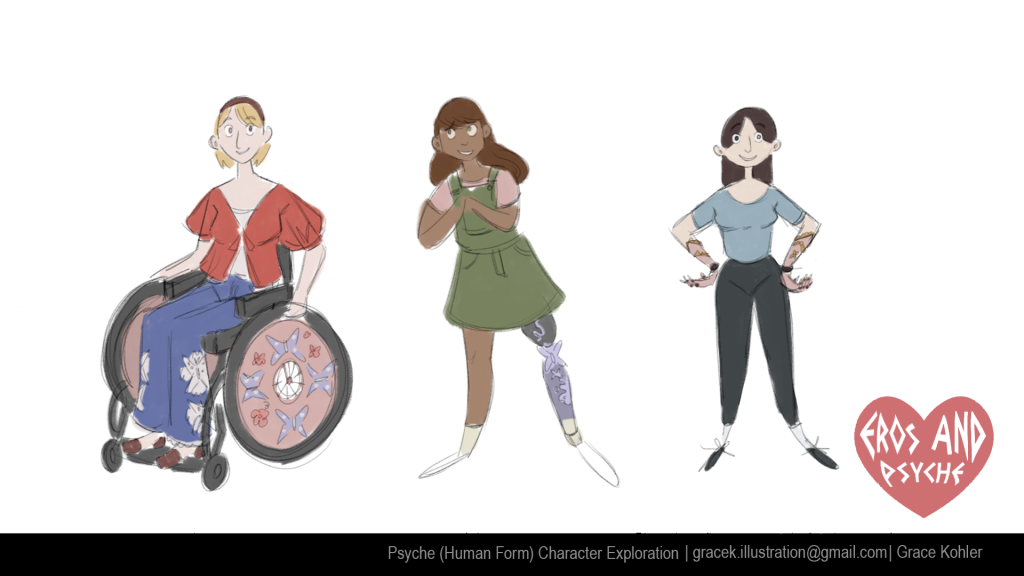
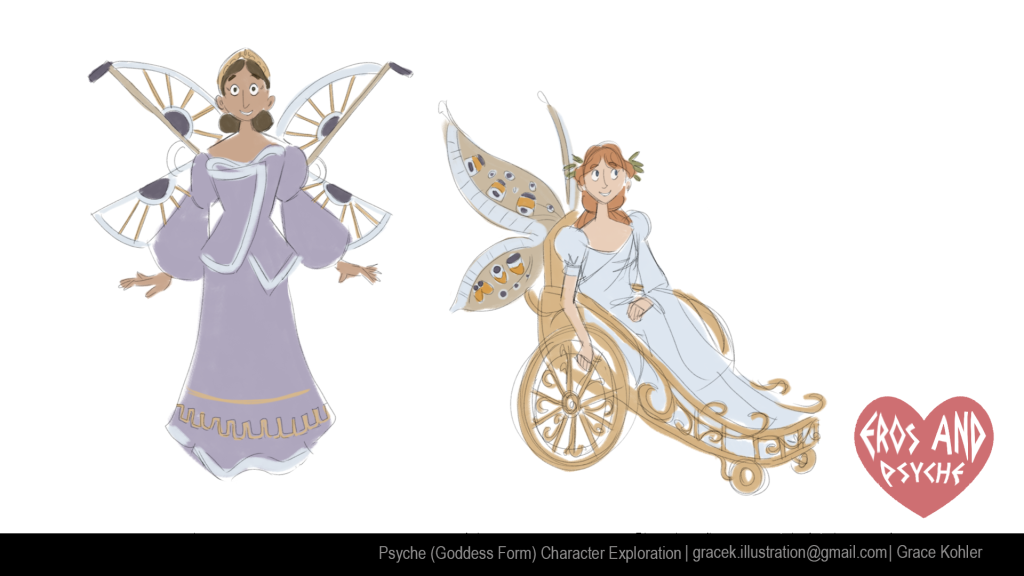
Psyche, although a seemingly naive character who is placed within a set of extraordinary circumstances, can be perceived as both resilient and gentle. Qualities that come together and form a figure who maintains strength in the perception of herself and others in a manner that is both strong yet tender. A manifestation of love that stems beyond visual perception and is derived from their innermost being or soul. Given that much of this story focuses on the notion of love and beauty, many of these characters attempt to highlight the expansiveness of this term in the same way that their designations as Gods and Goddesses articulate this idea within their title. An idea which manifested into Psyche being presented in her chariot or wheelchair. A personal device which also served as an additional form to express this figure most notably with the incorporation of the color purple and butterflies, features historically tied to this figure.
Aphrodite
Protective, short fused, and cunning, as well as what Grecians typically defined as the pinnacle of beauty, Aphrodite is a figure that has been depicted time and time again in both literature and art. Romantic imagery which emphasized red hair as a symbol of beauty due to the uniqueness of its appearance along with fuller figures. Features which were undertaken within this configuration of this character but with a twist. In her Goddess form, this character draws inspiration from elements of the art nouveau movement, that of which are also known to reference the Greek aesthetic. In addition to centering upon romantic imagery heavily influenced by natural forms. Components which work well when incorporating icons such as pearls, roses and even elements reminiscent of sea foam which are tied to this character. Themes which are contrasted by Aphrodite as presented in her modern day attire. A look which initially obtained a classic and old wealth style before landing on a more corporate demeanor.
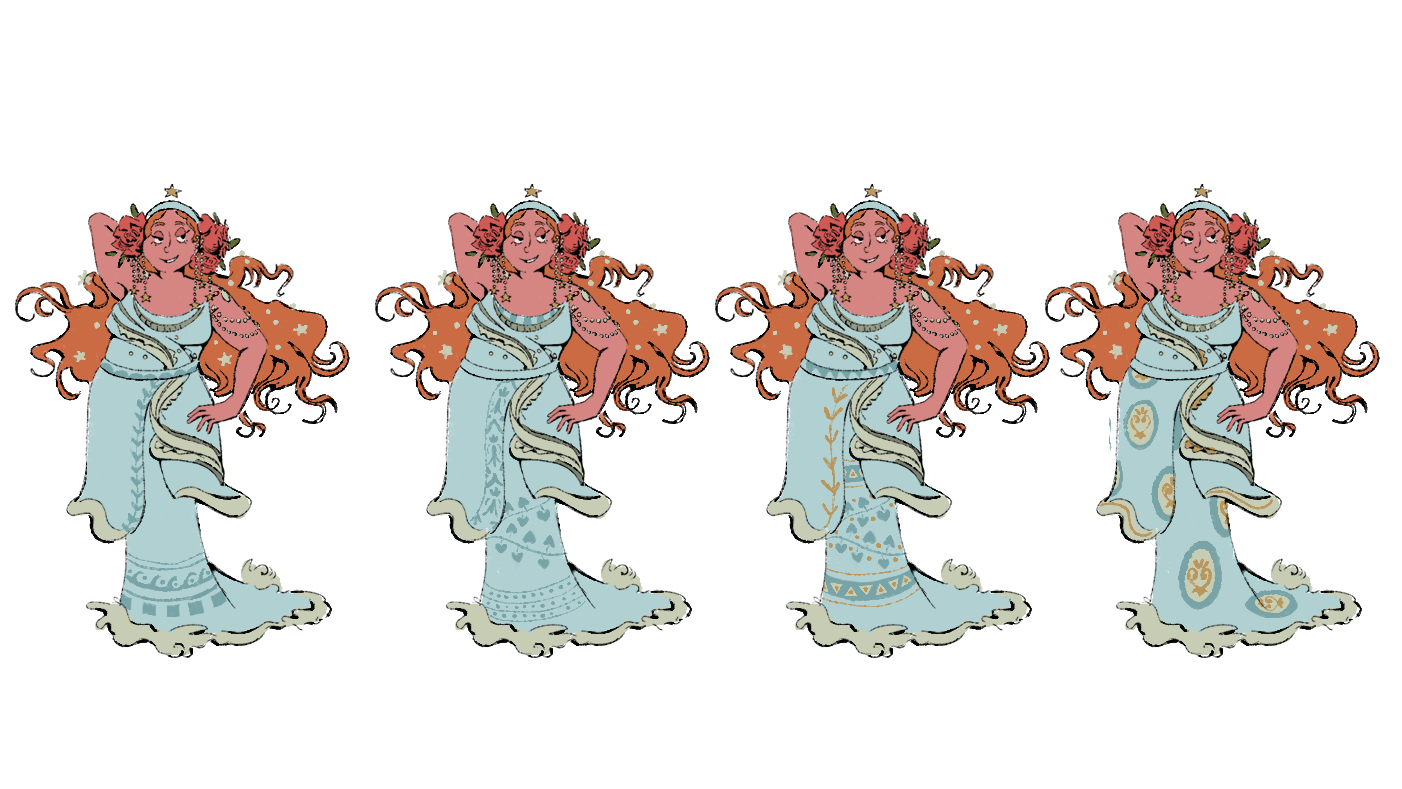
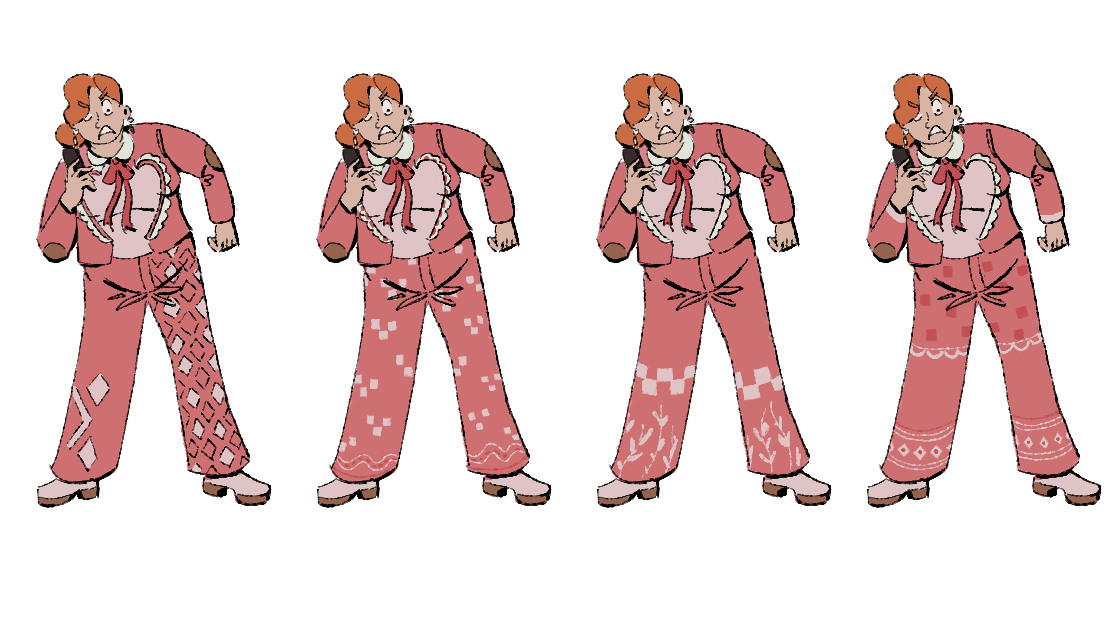
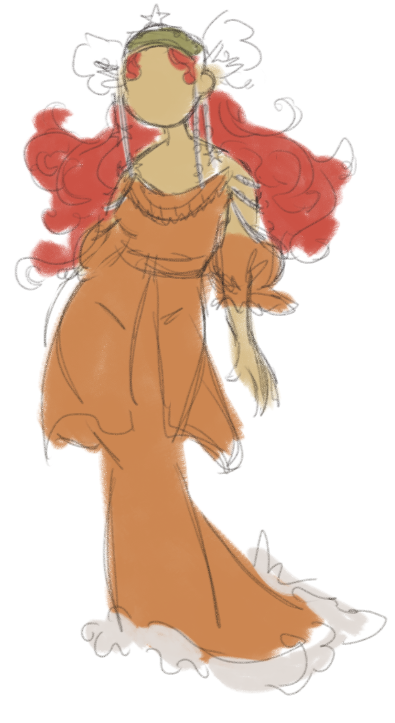
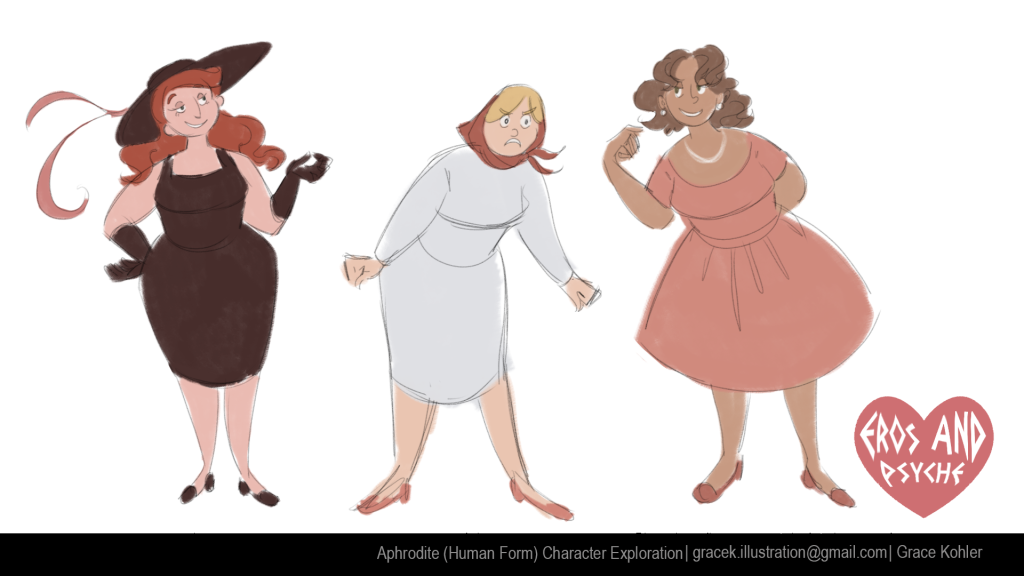
Continued Examples of Character Exploration
Before landing upon each characters final look, extensive exploration is put into finding the best ways to articulate each characters personality, both physically and stylistically. Carefully taking into consideration elements such as the types of environments they might be seen in, how might their outfits speak on behalf of the type of character they are and how they might hold themselves when in these outfits.


Similar to other iterations of Eros, his human form often took on a beachy coastal appearance.
At one point Aphrodite’s mortal form obtained a classic and old wealth style before landing on a more corporate demeanor.
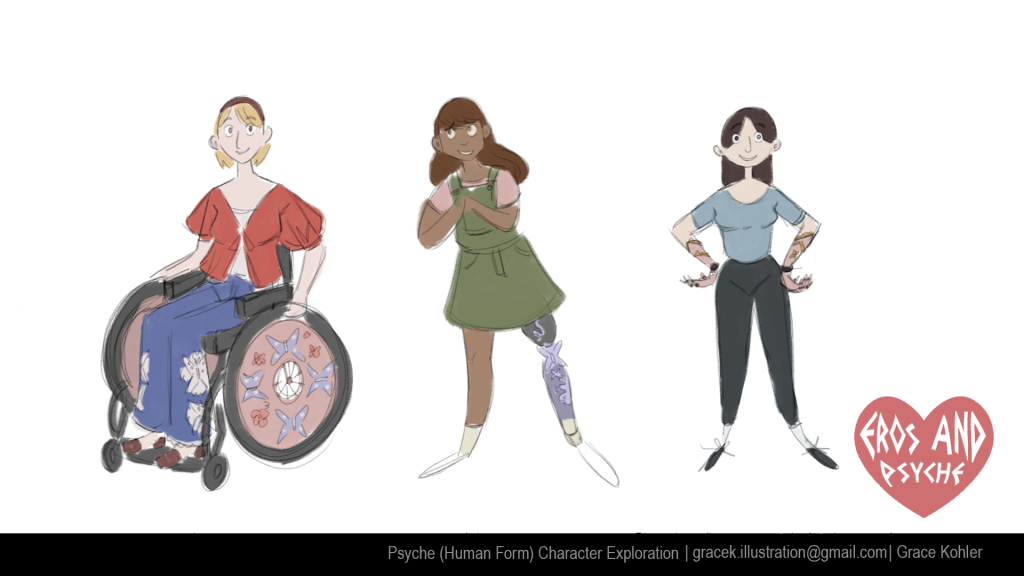
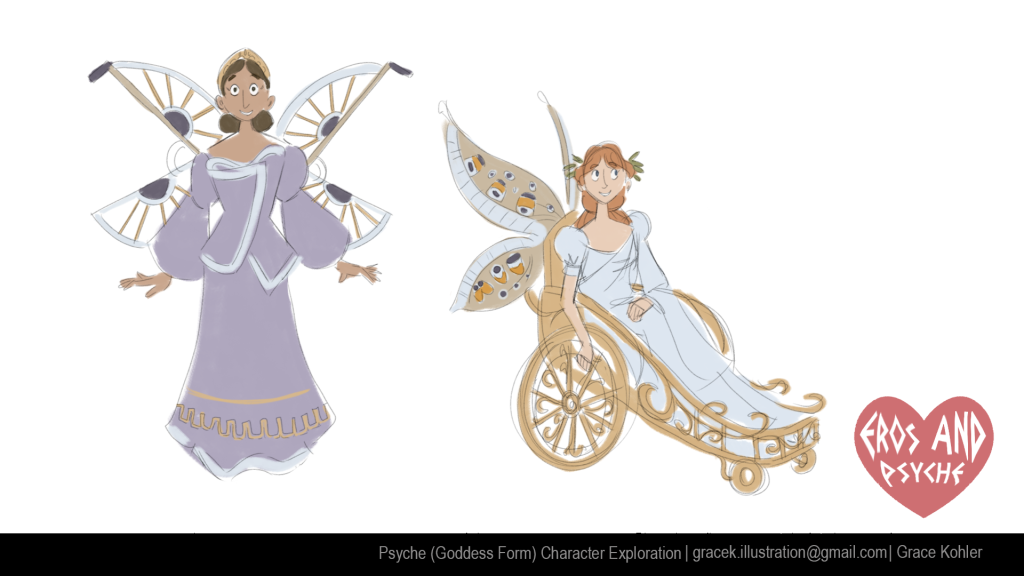
Several early iterations of Psyche include experimentation with a variety of prosthetics and outfits, each of which attempt to incorporate her butterfly iconography.
Within earlier trials of Psyches Goddess form, investigations were made into finding different ways to implement her wheelchair as part of her transformation.
Expression Sheets, Pose Sheets, and Character Turn Arounds
In order to fully grasp each character, beyond just their physical appearance, several of them were also curated into expression and pose sheets, along with character turn arounds, so as to articulate the personality and physicality in various capacities. Tools that could be used when applied to further developmental stages such as animation.
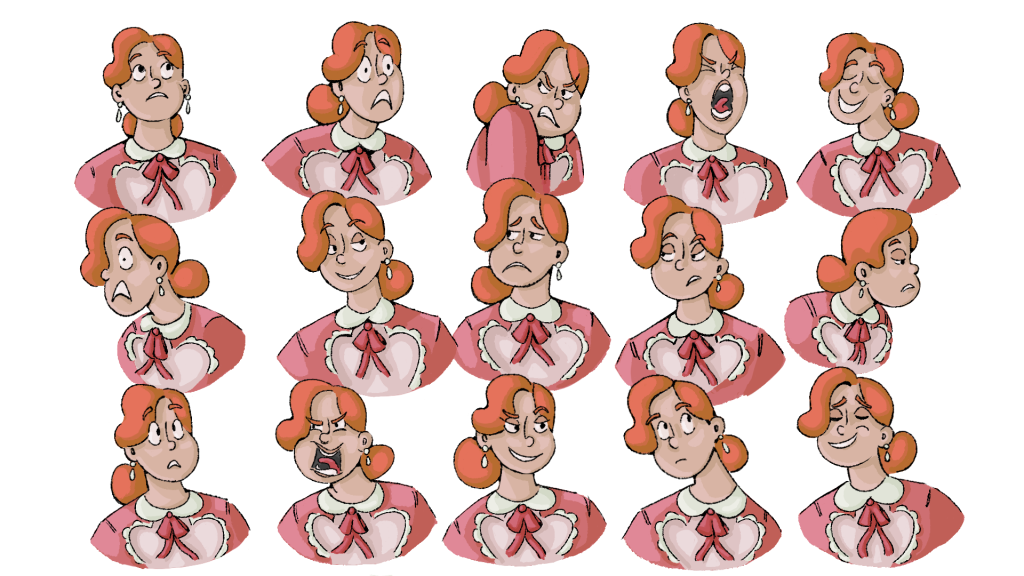
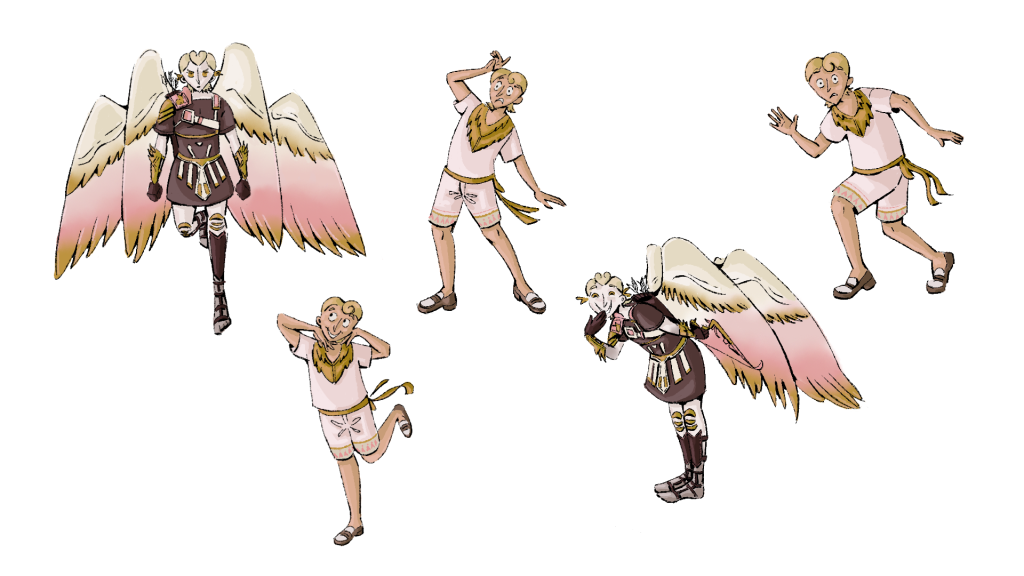
Expression sheet for the human form of Aphrodite, featuring a range of emotions from happy, confused, smug, angry and so on.
Pose references of Eros’s ranging personality and expressions in both his human and God form.

Eight point turn and reference of Psyches elder sister Aglaura and how she would appear from multiple different angles.
Character Line Up
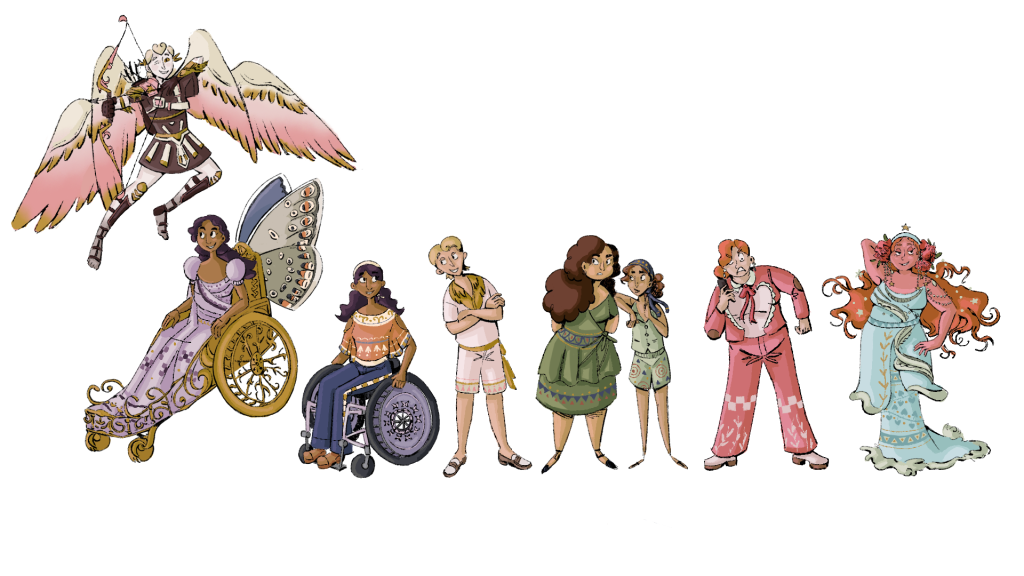
The finalized versions of these characters, although having developed into a style which is partially removed from its original imaginings, still maintains a faithfulness to these designs and their Greek origins. A balance maintained through a fusion of aesthetics and carefully curated choices which consider the character historically and narratively. Decisions focused on effectively articulating the personality of these figures within a modern context which could be easily understood from a visual capacity with or without knowing the original story. Characters which come to life on their own and tell their own narrative, allowing viewers to engage or even see themselves, their friends, or their families in them. Designs that tell a story, even one which has been around hundreds of years and will be continue to live on in a new capacity for new audiences, all the while remaining faithful to its origins.
Visual Retelling
To sum up the development of these characters and to bring them into a pictorial context, below is a loose visual and narrative retelling of this tale which has been devised using “vases” bearing textual background accompanied by small vignettes detailing the described events.
